Although Hanyu Pinyin has been Taiwan’s official romanization system since the beginning of this year, progress in implementation on signage has so far been little to none (at least in what I’ve witnessed). So I was pleased to see this sign earlier this week at the remodeled train station in Zhunan, Miaoli County.
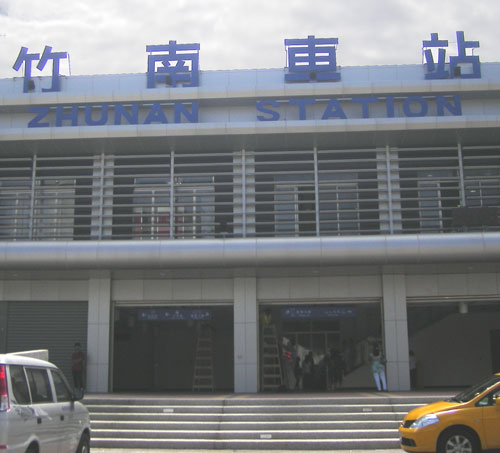
Those big letters unmistakably spell out the name of the city in Hanyu Pinyin. Good.
But what about the use of romanization inside the station? Here’s a shot of part of a board listing the stations near Zhunan.
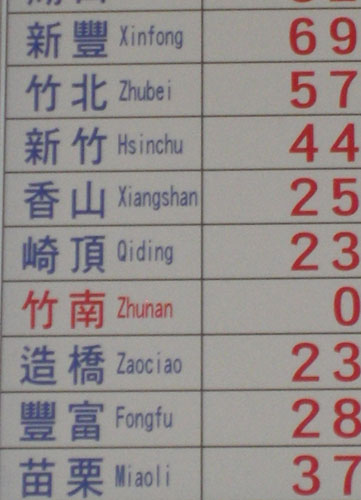
Let’s look at the systems used in the names above:
- Xinfong — Hanyu Pinyin and Tongyong Pinyin mix
- Zhubei — Hanyu Pinyin
- Hsinchu — Wade-Giles
- Xiangshan — Hanyu Pinyin
- Qiding — Hanyu Pinyin (BTW, that’s a terrible Q, as it’s too little distinct from an O, especially at a distance.)
- Zhunan — Hanyu Pinyin
- Zaociao — Tongyong Pinyin
- Fongfu — Tongyong Pinyin
- Miaoli — same in most systems
Once again we see the government’s incompetence when it comes to such simple things as spelling names correctly on signage.
But since at least “Zhunan” was right, what about signage for the same name beyond the train station?
Well, there’s still Tongyong Pinyin (“Jhunan”):
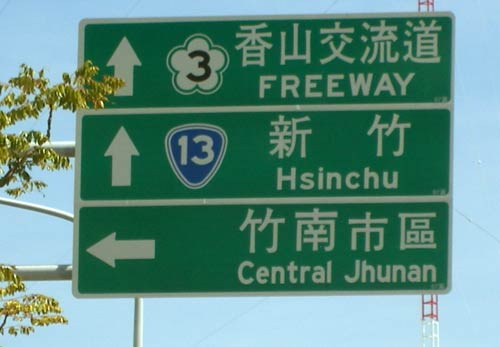
And there’s still Tongyong’s predecessor, MPS2 (“Junan”), along with other systems, typos, and sloppy English:
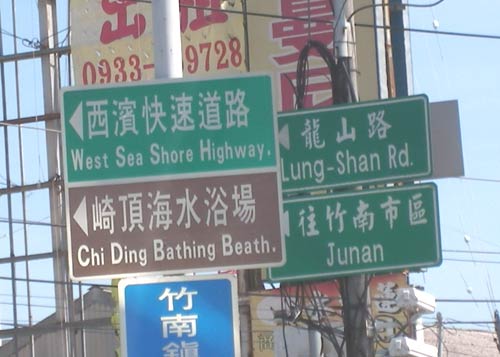
And there are still spellings that are simply wrong (“Jhuan”), regardless of the system:
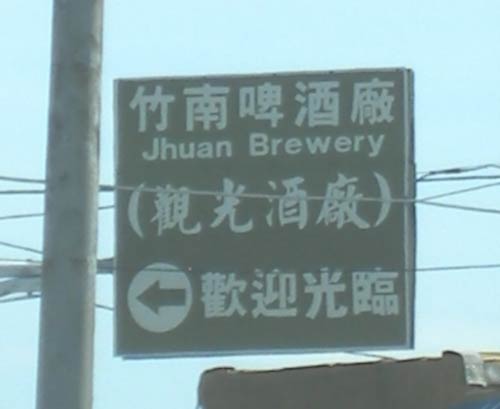
I’ve said it before, I’ll say it again: “Taiwan’s romanization situation: plus ça change, plus c’est la même chose.”
